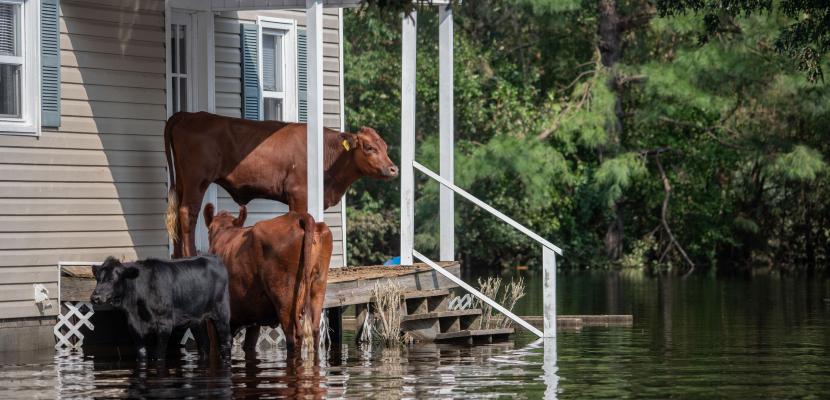
By Bode Ogunmakinde, Senior Teaching Fellow in Construction Management & Quantity Surveying, Faculty of Society and Design.
Climate change is making weather events more frequent and more intense, as we've seen with recent floods in NSW and Victoria. Crop and livestock losses have been devastating both for farmers and for the nation's food ecosystem.
In recent weeks, we have seen mass evacuations of towns and suburbs in Victoria and New South Wales, with families packing their belongings and pets into cars and vans as floodwaters rise.
But when you have hundreds of animals, each weighing up to a tonne, evacuating a disaster zone gets a lot more complicated. How do you move 100 cows, for example, when roads are flooded or cut off by fire? Where do you find a safe place big enough and with the infrastructure herd animals need?
These are questions my colleagues and I set out to answer in our research for the New South Wales government to help farmers and governments prepare for disasters.
While many areas have emergency plans that identify safe passage and places allowing for humans and their belongings to be evacuated, there are few provisions for the evacuation of livestock, and their owners become solely responsible for finding and getting them to safety.
Many owners simply don’t have access to, or aren’t aware of, evacuation locations in their area that have the space and facilities needed to keep their animals safe in disaster situations. According to earlier research on this topic, more than half of animal owners are unsure where to take their animals in the event of a disaster and another third are unsure whether they should take them at all.
People's decisions during emergencies, such as how they will respond and when or if they will evacuate, can also be influenced by the human-animal bond. Despite the very best intentions, this confusion, lack of access or lack of accurate information can result in the death of their animals.
During the 2019-2020 bushfires in Australia, nearly three billion animals were killed or displaced, and many threatened species and other ecological communities were severely harmed. These losses highlight the importance of adequate pre-planning for the evacuation of animals during a disaster event.
Farmers need to know where they can take their animals, what facilities are available to ensure their ongoing safety and care, and that they can gain access to the site from their current location. They also need to be confident that these safe havens adhere to the Australian Animal Welfare Standards and Guidelines. It is critical for potential animal safe places to have basic facilities, equipment, biosecurity, and emergency protocols, as well as access to water and feed troughs.

There is little to no research in Australia on stock animal preparedness and evacuation. My colleagues and I set out to help fill this gap, starting with the Hunter region in New South Wales, by providing first-hand information on the location and condition of potential animal safe sites.
Livestock saleyards and regional showgrounds are examples of existing facilities that could provide emergency animal shelter. District pony clubs, dog kennels, and catteries can also help to a lesser extent. Temporary cages may be available at commercial veterinary hospitals and clinics, but they are rarely accessible after hours. Horse, dog, and harness racetracks may be appropriate refuges in more urban areas.
In a pilot study, we identified sites that had the potential for use as livestock safe havens, then assessed and rated them to determine their viability and any work or maintenance needed to bring them up to minimum standards for an operation animal evacuation site.
We looked at 25 potential animal evacuation sites, including saleyards, showgrounds, animal shelters, and racecourses across the Hunter region. We found that 16 per cent would require cosmetic work, 76 per cent would require minor work, and the remaining facilities would require significant work.
Our report makes recommendations that we hope will allow more detailed future planning for livestock evacuations by including the assessment guideline in local governments’ emergency management plans.
The Department of Industry, Science, Energy, and Resources is now funding this research through the Black Summer Bushfire Recovery Grant to investigate climate-smart adaptive resilience and engagement for animal evacuation in multiple local government areas in Hunter Region, New South Wales. A similar research project in Queensland and other states and territories across the country would be beneficial to the nation's economy, livestock farmers, and other animal owners.
As we continue to experience the increasing effects of climate change, undertaking these upgrades to prepare for natural disasters will save lives and livelihoods, while protecting the nation’s economy and food security.